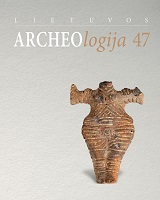MELLAART, GIMBUTAS, GODDESSES, AND ÇATALHÖYÜK: EARLY ASSUMPTIONS AND RECENT PERSPECTIVES ON THE ÇATALHÖYÜK FINDS
MELLAART, GIMBUTAS, GODDESSES, AND ÇATALHÖYÜK: EARLY ASSUMPTIONS AND RECENT PERSPECTIVES ON THE ÇATALHÖYÜK FINDS
Author(s): Nurcan YalmanSubject(s): Archaeology, Gender Studies, Prehistory
Published by: Lietuvos istorijos institutas
Keywords: Neolithic Anatolia; Çatalhöyük; Mellaart; Gimbutas; Mother Goddess; Neolithic Figurines;
Summary/Abstract: Çatalhöyük East, a Neolithic site in Central Anatolia, has often been referred to as the place of the Mother Goddess. This is because of interpretations made by Mellaart, who discovered and excavated the site in the 1960s, when he discovered its striking symbolism. The female figurines among the finds are the most important reason for this fame. Therefore, various feminist groups have been attracted to this place because they perceived the site as a proof of the existence of a peaceful matriarchal community in the past. All of this is aligned with Gimbutas’ peaceful era theory, which has a Mother Goddess belief. This article will explain how archaeological finds at Çatalhöyük accompanied these theories in the time of Gimbutas and Mellaart and how new studies and new perspectives have altered these assumptions.
Journal: Lietuvos archeologija
- Issue Year: 2021
- Issue No: 47
- Page Range: 125-143
- Page Count: 19
- Language: English

